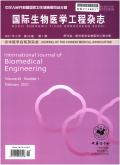Breath acetone: trends in techniques and its potential clinical applications in diabetes management
引用次数: 0
Abstract
Human exhaled gases contain thousands of trace amounts of trace volatile organic compounds (VOCs), some of which are endogenous substance and can be detected as potential biomarkers for disease. Acetone, the second highest VOCs in human exhaled gases, has been widely used in non-invasive diagnosis and monitoring of diabetes. At present, more than 30 independent studies have been undertaken on the range of breath acetone concentration and its influencing factors, and the quantitative relationship between blood glucose and glycosylated hemoglobin in diabetic patients. However, there are still many challenges in the application of breath acetone as a clinical regulatory parameter for diabetes. In this paper, the research status and progress in the breath acetone and analysis method were reviewed, and the existing problems in diabetes diagnosis and monitoring were discussed. Besides, the future development prospects were analyzed with the present technical level. Key words: Diabetes; Acetone; Breath analysis; Biomarkers; Cavity ring-down spectroscopy呼气丙酮:技术发展趋势及其在糖尿病治疗中的潜在临床应用
人体呼出气体中含有数千种微量挥发性有机化合物(VOCs),其中一些是内源性物质,可以作为潜在的疾病生物标志物进行检测。丙酮是人体呼出气体中第二高的挥发性有机化合物,已广泛应用于糖尿病的无创诊断和监测。目前,针对糖尿病患者呼吸丙酮浓度范围及其影响因素、血糖与糖化血红蛋白的定量关系进行了30余项独立研究。然而,呼气丙酮作为糖尿病临床调节参数的应用仍存在许多挑战。本文综述了呼吸丙酮及其分析方法的研究现状和进展,并对糖尿病诊断和监测中存在的问题进行了讨论。并以目前的技术水平对未来的发展前景进行了分析。关键词:糖尿病;丙酮;呼吸分析;生物标志物;腔衰荡光谱学
本文章由计算机程序翻译,如有差异,请以英文原文为准。
求助全文
约1分钟内获得全文
求助全文

 求助内容:
求助内容: 应助结果提醒方式:
应助结果提醒方式:


